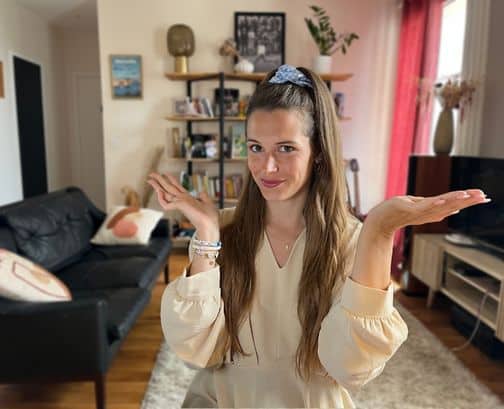In this video, I explain 4 different ways of greeting someone, of saying hello, depending on the context. Whether you're with friends or strangers, you can (and sometimes must) adapt the way you greet someone. It's wrong to say "Hi" or "Cuckoo" to people you don't know, for example.
If you liked the video, please like it and subscribe to the channel, it encourages me a lot! Thank you
- 0:00 - Introduction
- 1:03 - The common way
- 2:31 - The formal way
- 4:15 - The familiar way
- 5:27 - The "street" way, in slang
Discover this other article on the correct use of the word "bonjour" in French.
Transcript of the video
Hello everyone. I hope you're well and having a good day. Today, we're going to look at 4 different ways of saying hello, of greeting someone, depending on the context, depending on the situation. The first way is the most common. The second way is a formal way of saying hello, in a sustained language. The third way is the more familiar way of saying hello to friends and family.
And finally, we'll look at one last way of saying hello, which is more of a "street" slang way. Before you start, remember to activate the subtitles. It'll make it easier for you to understand the video. To see all my videos, don't forget to subscribe to the "Hellofrench" channel. The most common way of greeting someone is simply to say "bonjour" during the day and "bonsoir" in the evening. In some languages, there's a different word for the afternoon.
In French, this is not the case. We say "bonjour" all day long, and from around 6 p.m. onwards, we say "bonsoir". If there's only one way to greet people, this is it. It's by saying "bonjour" during the day and "bonsoir" in the evening. It's what you'll hear or say most often, most frequently. You can say "hello" or "good evening" at the store, when you meet new people, when you arrive at work, for example, it's really the most common way of greeting people.
For example, when you arrive at the bakery, you might say: "Hello, one baguette please". Or at the cinema, you could say: "Hello, two tickets for James Bond please".
Let's move on to a more formal, polite way of saying hello. It's actually quite simple: you just add "madame" or "monsieur". For example, you could say "bonjour madame" or "bonjour monsieur", or "bonsoir madame" or "bonsoir monsieur". You'll use this formula, this very, very polite way of saying hello, with strangers, but especially in situations where you need to be very polite. For example, if you're interviewing for a job, when you arrive you say "bonjour madame" or "bonjour monsieur".
In the same way, if you're visiting an apartment to rent, you say to the real estate agent "good morning sir", to show that you respect this person and are more polite. For example, you could say to the secretary when you arrive at the doctor's: "Good morning madam, I have an appointment with Dr. Dupont". In writing, you can even just say "Madame" or "Monsieur". You don't use bonjour in a formal letter or email. So, in very formal language, you put "Madame" and then the text you want to write.
Same thing, so you put "Sir," and your text. So you don't need to say "hello".
Let's move on now to a more familiar way of saying bonjour, the way you greet your family, friends, close colleagues and so on. There are different words in French that you can use both orally, i.e. when you're speaking, and in writing, i.e. when you're writing. The two most common words for greeting and saying hello to friends and family are "salut" and "coucou". So, for example, I might say to my sister: "salut, tu vas bien?" or I might say: "coucou, ça va?". More and more in French, especially among young people, we also use the English "hello" to say bonjour. For example, when I arrive at work in the morning, I say "hello, ça va? We also use "Hey", but a little less often and more in writing.
The last way we're going to see today of greeting someone is in a "street" way, in slang. Young people tend to use it on the street, outside high schools. It's a slang way of saying hello, in very, very colloquial French. The two most common ways of saying hello are "yo" and "wesh". For example, I'll say, "yo, tu vas bien?" Or "wesh bien bien?". Sometimes, in very, very colloquial language, we say "bien ou bien?" You ask someone if they're okay, but it's a way of speaking or implying that the person can't be wrong, so it's as if they can only be okay. It's a very streetwise way of speaking.
That's it for today, I hope you enjoyed this video, if you did, put a like on it and don't forget to subscribe to the hellofrench channel to see more videos. See you soon.








